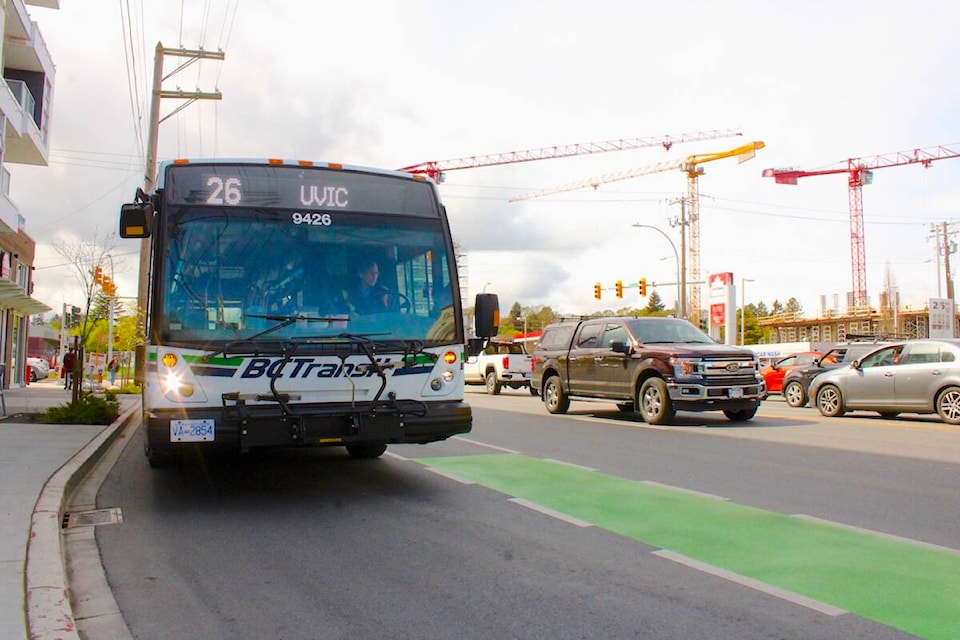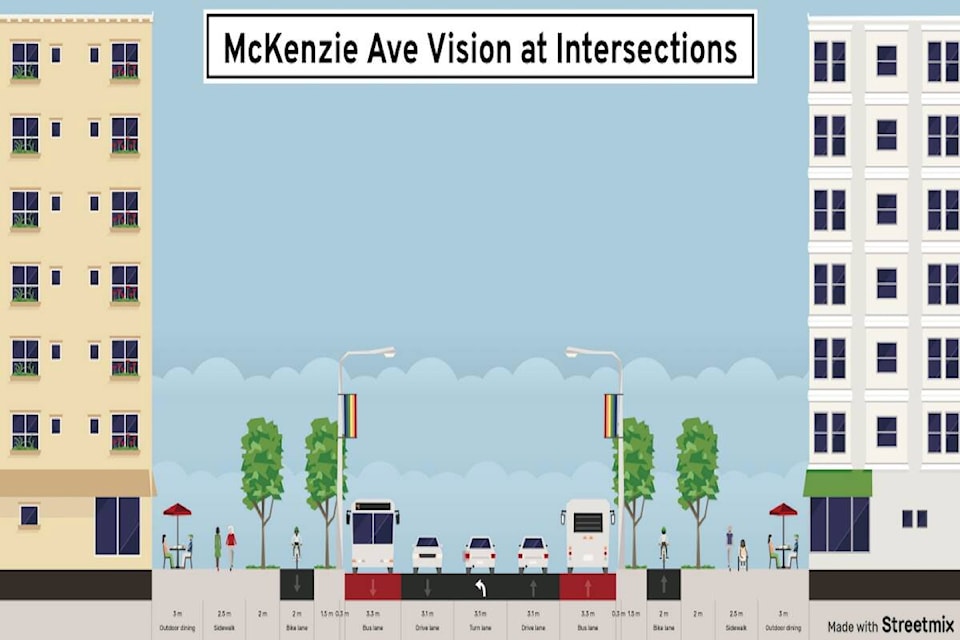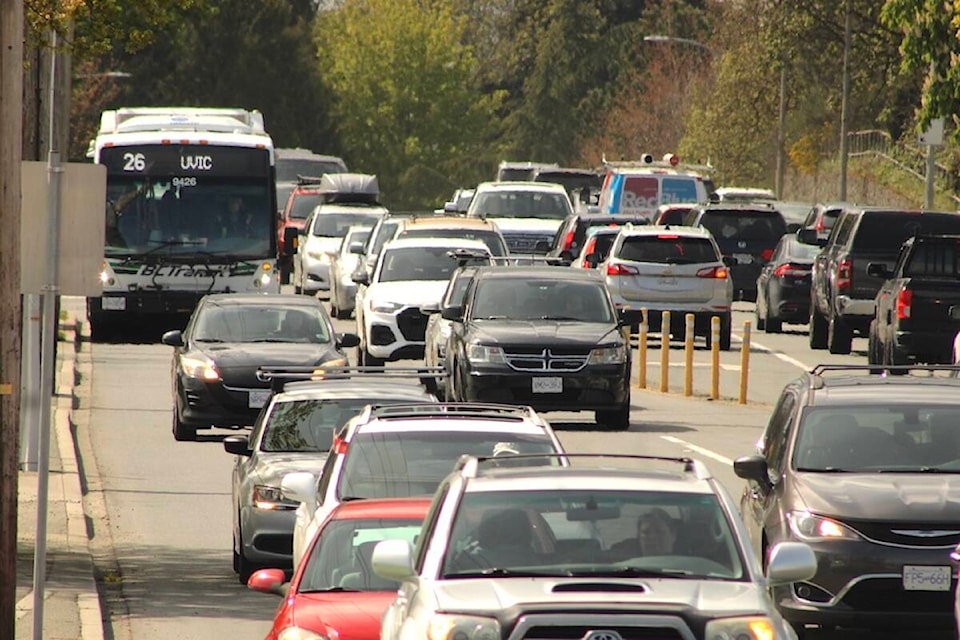If existing lanes were further dedicated for transit on Greater Victoria’s major roadways, Eric Doherty says more people would be motivated to take the bus and it would lead to better local air quality, fewer serious crashes causing injuries or deaths and bolstered mental health as residents enjoy quieter streets.
“For decades, we’ve been planning for more cars and it’s a bit of a challenging mindset-shift, but there’s huge benefits with planning for a future with fewer cars,” the Climate Justice Victoria member said in an interview with Black Press Media.
He’s supporting a petition calling on the District of Saanich to show climate leadership by creating dedicated bus lanes on McKenzie Avenue as soon as possible. It looks to spur the change on all four-laned-or-wider sections of McKenzie this year to create better linkages with the University of Victoria.
Saanich told Black Press Media those changes won’t be happening this year as such a move would be pre-mature amid larger land-use planning efforts already in the works.
While understanding big urban planning efforts take time, the district’s position is disappointing for UVic student Mary Stuart, who notes many of her post-secondary peers rely on transit for commuting to campus or wherever they need to go.
“What we’re talking about here is literally painting lines on the road to do something that will improve transit, reduce traffic and reduce emissions, so I think it’s disappointing and I don’t understand why that can’t be done while they continue to work on longer term plans,” Stuart said.
As someone who’s concerned about the climate crisis, Stuart wants to see her community take policy actions that tackle greenhouse gas emissions.
“We know too that dedicated bus lanes do lead to some traffic evaporation and there are some students who feel like they have no other option but to drive,” she said. “We know dedicated bus lanes will help that commute but also make transit a better option for people.”

Saanich says its Mackenzie RapidBus Corridor Study is the long-term vision for the corridor and it will provide: walking and cycling infrastructure, facilitate RapidBus service from Uptown to UVic, identify RapidBus station locations and enhances tree planting opportunities.
The study is the main technical aspect of the district’s Quadra McKenzie Plan, which is focused on guiding land-use and transportation changes over the next 20 years. A Saanich spokesperson said the district intends to have a draft version of the plan ready for public consultation this summer, while the finalized version will include updating the district’s official community plan.
The spokesperson added that implementing RapidBus service, like the one that has begun rolling out between Victoria and the West Shore, on a stretch known as the McKenzie Line is likely two to five years away and is dependent on funding from various levels of government. That funding is needed for constructing the bus lanes and for increasing BC Transit service levels on them to ensure the routes are utilized appropriately.

Doherty countered that simply painting some existing traffic lanes to reallocate them for transit would be a quick and inexpensive solution, and would offer improved service with the current amount of buses on the routes. While he called the Quadra McKenzie Plan widely supported, Doherty said Saanich will miss its climate and mode share targets if the changes only happen in conjunction with other large projects.
“They’re proposing to do it over decades,” he said.
The transit advocate uses Boston, Mass. as an example of a city that quickly painted bus-only lanes and saw success in getting people moving. Taking that approach on McKenzie would reduce bus overcrowding during peak travel times, get people to their destination quicker and save families money by allowing them to downsize to fewer vehicles, he said.
A Capital Regional District report from 2020 found “higher transportation costs are largely a product of vehicle ownership.”
“It’s a reward for doing the environmentally responsible thing,” Doherty said, adding that better transit on McKenzie would also alleviate the ‘Colwood crawl’ and the need for parking at UVic.
“If you get more service, faster service, reliable service, more people will ride and some of those people will choose to leave cars behind.”
Saanich taking action would hopefully inspire surrounding communities to make similar changes, Doherty said, noting a priority would be Victoria expanding bus-priority lanes downtown on Douglas Street.
READ: Efforts begin to rezone Saanich’s Uptown Douglas area to spur development



